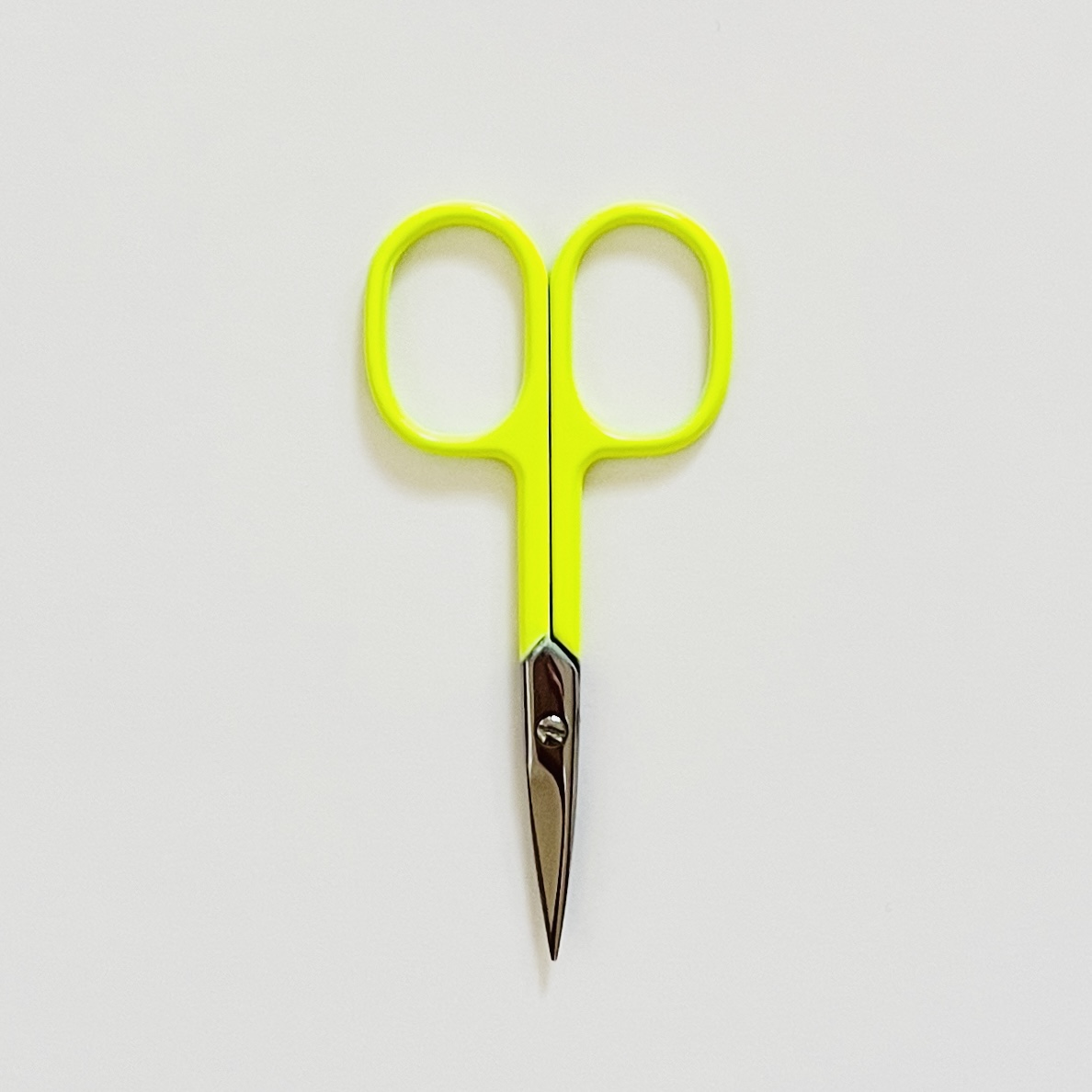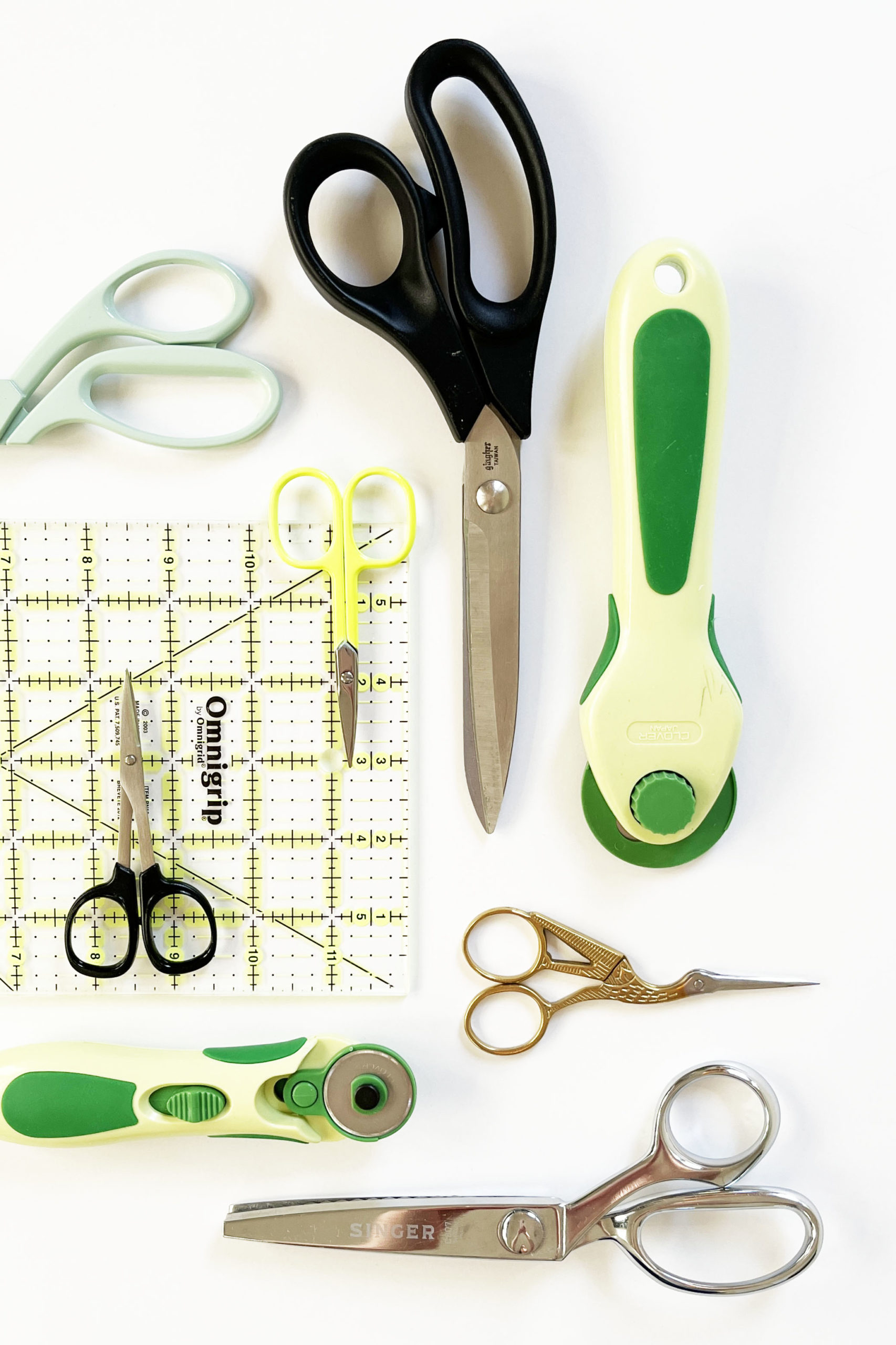If you’re new to quilting, or even if you’ve been doing it for a while, cutting fabric can be a daunting task. It’s one of those things where inaccuracy can have a kind of compounding effect on your quilt. But don’t worry! With the right tools and techniques, you’ll be cutting fabric like a pro in no time. Here are some tips to help you get started.
Tools You’ll Need
- A rotary cutter: This is a must-have tool for quilters. It’s a small, circular blade that is used to cut fabric quickly and accurately.
- A self-healing cutting mat: This is a mat that is designed to be used with a rotary cutter. It’s made of a special material that won’t be damaged by the rotary cutter blade.
- Quilting rulers: These are long, straight rulers that are used to measure fabric accurately. They come in a bunch of sizes and shapes. My staples are a 6 x 24-inch and 6 x 12-inch, but if I could invest in some additional ones I would start building a collection of smaller and larger squares for trimming HSTs and other pieced block units.
- Fabric scissors: It’s always a good idea to have a pair of fabric scissors on hand for trimming and cutting small pieces of fabric. I also like to keep a tiny pair like these ones by my sewing machine for snipping threads when chain piecing.
Tips for Cutting Fabric
- Make sure your fabric is properly pressed and wrinkle-free before cutting.
- Use a sharp rotary cutter blade and replace it often. A dull blade can cause fabric to fray or shift during cutting. I am really guilty of not replacing my blades often enough (a tendency that I think was made worse by the pandemic, as blade replacements seemed to be one of those things that was impossible to get). But if you can stay on top of it, you’ll be rewarded with much cleaner patchwork on the reverse side of your quilt tops.
- When cutting strips or squares, use a quilting ruler to help keep your cuts straight and even. Use a clear quilting ruler to help you see where you’re cutting and ensure that your fabric is lined up correctly.
- Be consistent! When using a clear ruler, you quickly realize that you have the option to line your cuts with the inside or outside of the rule line … pick one (I use the outside to make sure my pieces aren’t short) and use that every time.
- Take breaks often to avoid fatigue, as cutting fabric can be a repetitive task that strains the hands and wrists. I definitely noticed this when cutting fabrics for my queen-sized Sugarcubes quilt.
- Keep your cutting mat clean and free of fabric fibers by wiping it down with a lint roller or a damp cloth every once in a while.
My most used scissors
I use every single tool in the photo above, but if I had to pick just three, it would be:
- Gingher 9″ Lightweight Bent Scissor (the large ones with the black handle) – sharp, light in weight but still substantial, these are my go-to, “don’t use these for paper” scissors. It’s a slight investment (I think these run about $45 Canadian) but worth it, I will have them forever and they’ve made my sewing life much easier.
- Clover rotary cutter. There are two pictured here but the larger one is the one I like. To be honest I only purchased the smaller one during the aforementioned replacement blade shortage, because it came with blades. The larger one gives a little more control and it what I use, along with my clear ruler and mat, to cut all the fabric for my quilts.
- Kai 5100 scissor (the tiny ones with the black handle) – these are incredible, perfect for appliqué projects where you sometimes need to cut very precise curves or corners. Even more impressive, they are so incredibly sharp they can cut through multiple layers of fabric at once. I learned about them as part of a Carolyn Friedlander project and you can even buy them on her site.
Honorable mention to embroidery scissors. These are great to have for any kind of handwork, especially great because their diminutive size makes them less like to destroy your fabric with a hasty snip (a real hazard if I’m involved). There are two pictured above: the bird ones, which I think are pretty widely available, and the neon ones, which I got from Superbuzzy. I can’t seem to recall what kind they are but they’re very similar in feel to a nice pair of Kelmscotts I have.
Do you have any favourite scissors that you can’t live without? Let me know in the comments!


